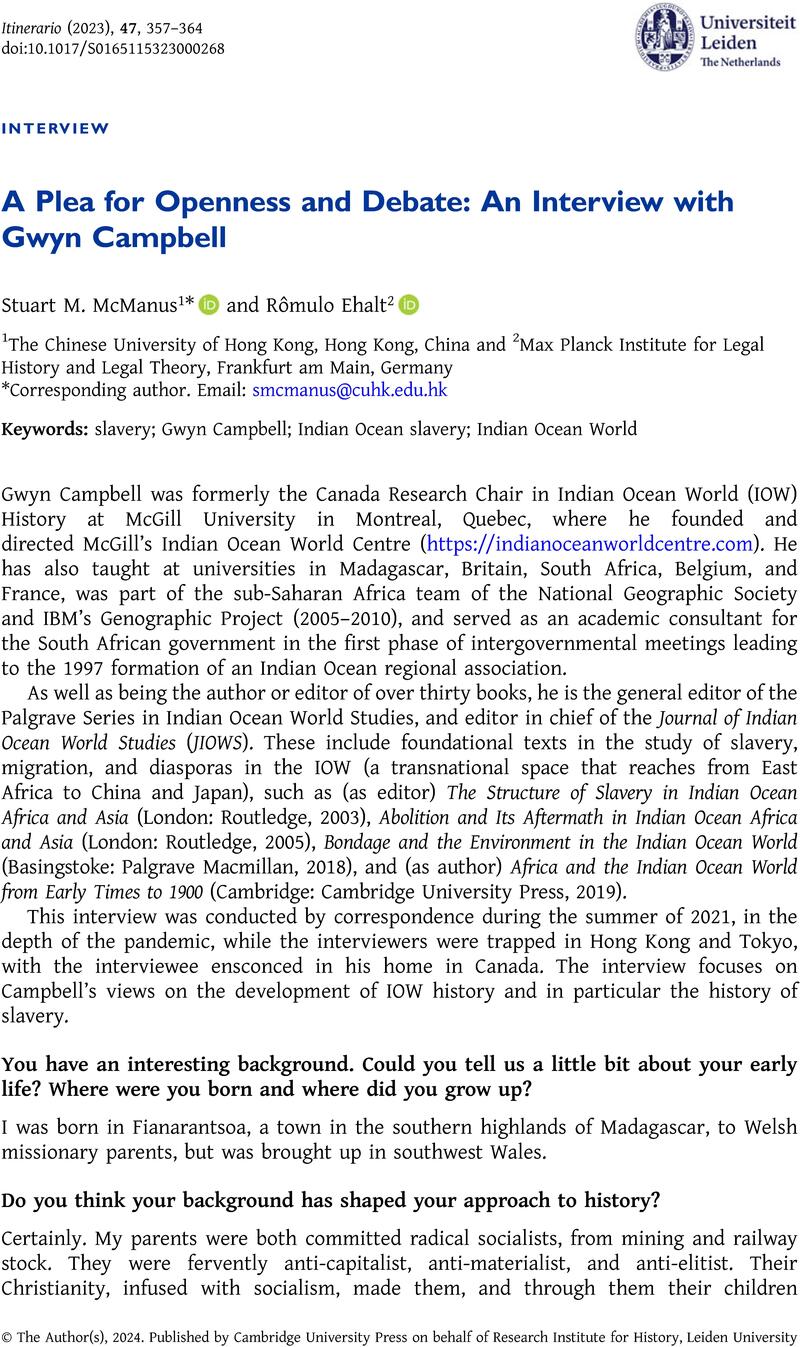No CrossRef data available.
Article contents
A Plea for Openness and Debate: An Interview with Gwyn Campbell
Published online by Cambridge University Press: 14 February 2024
Abstract
An abstract is not available for this content so a preview has been provided. Please use the Get access link above for information on how to access this content.

- Type
- Interview
- Information
- Itinerario , Volume 47 , Special Issue 3: Regimes of Bondage: The Encounter between Early Modern European and Asian Slaveries , December 2023 , pp. 357 - 364
- Copyright
- Copyright © The Author(s), 2024. Published by Cambridge University Press on behalf of Research Institute for History, Leiden University
References
1 Campbell, Gwyn, “The African-Asian Diaspora: Myth or Reality?” African and Asian Studies 5:3–4 (2006), 305–24CrossRefGoogle Scholar; Beheroze Shroff, “Sidis and Parsis―A Film Maker's Notes,” paper presented at the Conference on Cultural Exchange and Transformation in the Indian Ocean World, UCLA (April 5–6, 2002); Shroff, Beheroze, “Indians of African Descent: History and Contemporary Experience,” Souls 10:4 (2008), 320CrossRefGoogle Scholar.



